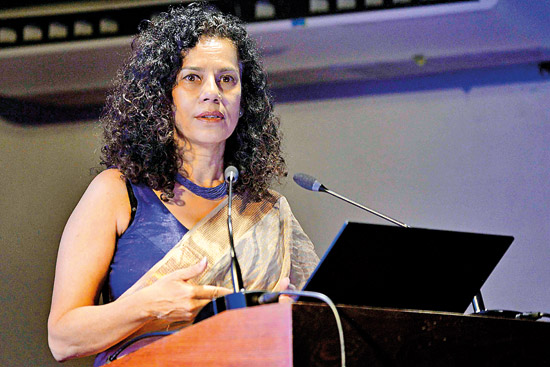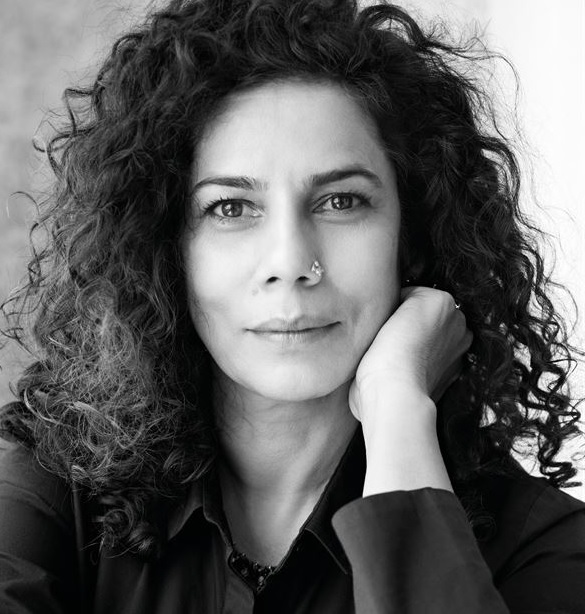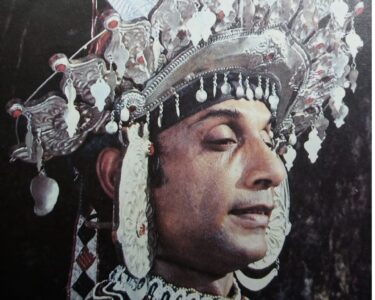Indian architect Anupama Kundoo delivered the 21st annual Geoffrey Bawa Memorial Lecture at the Sri Lanka Foundation Institute t sharing insights into her journey in architecture and extensive material research and experimentation.

Anupama Kundoo is an internationally recognised and award-winning Indian architect who started her practice in 1990. Not only does she have extensive experience in building varied architectural projects in India but also has the experience of working, researching and teaching in a variety of cultural contexts across the world. Kundoo has focused on building sustainable architecture to minimise impact in the construction process whilst maintaining the connection with the community. She specializes in making low-impact building technologies that are environmentally and socio-economically beneficial by incorporating everyday materials and low-skilled artisans. Material research and experimenting with locally sourced materials has been a key element of her work style.
Anupama Kundoo graduated from the University of Mumbai in 1989 and received her PhD from Technische Universität Berlin in 2008. Her research-oriented practice, started in 1990 in Auroville, has generated people-centric architecture based on spatial and material research for low environmental impact while being socioeconomically beneficial. Her body of works was recently exhibited as a solo show, Taking Time, at Louisiana Museum of Modern Art, Denmark. She has taught Architecture and Urban Management at various international universities including Yale and Columbia, strengthening her expertise in rapid urbanization and climate change-related development issues. She is currently Professor at Technische Universität Berlin, Germany and the Norman Foster Visiting Professor of Architecture at Yale University.
Remembering Geoffrey Bawa
Geoffrey Bawa (1919–2003) was a highly influential Sri Lankan architect, widely regarded as the pioneer of “tropical modernism,” a style that blends modernist principles with traditional forms and local materials suited to tropical climates.
.
Architectural Style and Philosophy
Bawa’s architectural style is characterized by the integration of buildings with their natural surroundings, blurring the boundaries between indoor and outdoor spaces. He paid close attention to the landscape, climate, and local culture, using materials like timber, stone, and terracotta that resonate with the environment. His designs often incorporated courtyards, verandas, and open-air spaces, making the most of natural light and ventilation, which are essential in tropical climates.
Notable Works
Some of Geoffrey Bawa’s most famous projects include:

Lunuganga Estate: Bawa’s country house in Bentota, Sri Lanka, which he transformed from a derelict rubber plantation into a beautiful garden retreat over several decades. It is considered one of his masterpieces and showcases his ability to integrate architecture and landscape.
Kandalama Hotel:

Located in Dambulla, Sri Lanka, this hotel is a prime example of Bawa’s approach to environmental integration. The building blends seamlessly into the surrounding forest, with its design emphasizing sustainability and minimal environmental impact.
Parliament of Sri Lanka:

One of Bawa’s most prominent public projects, this building in Sri Jayawardenepura Kotte, Colombo, is a striking example of his modernist approach combined with traditional Sri Lankan architectural elements.
Seema Malaka: A serene Buddhist temple on Beira Lake in Colombo, this project reflects Bawa’s sensitivity to religious and cultural contexts.
Legacy
Geoffrey Bawa is celebrated not just for his architectural achievements but also for his broader influence on design and planning in tropical environments. His work has inspired generations of architects, and his principles of integrating nature, culture, and modernist design continue to resonate in contemporary architecture. After his death in 2003, Bawa’s legacy has been preserved through his buildings and the Geoffrey Bawa Trust, which promotes his work and philosophy.








